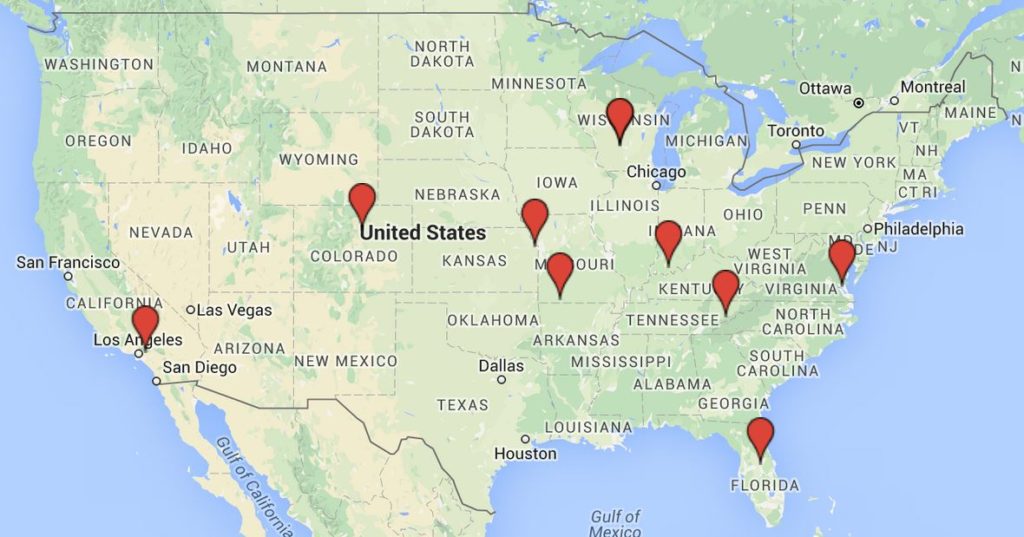Month: July 2016
Treasure Trove on Cornelia Street
Since 1977 the Cornelia Street Cafe has enriched the cultural life of New York City.
For almost 40 years, this West Village mecca has provided delicious food and the unique, inspiring performance of music and the spoken word.
And it is currently proving as impressive and delightful an experience as ever, if not more so.
The Bill
Stopping by for an excellent meal, I learned about their summer Solo Fest, starting this week.
Each evening will feature solo performers, beginning with Amy Stiller on Wednesday, July 13, in “Just Think,” a semi-autobiographical journey of the only non-famous member of a very famous family.
All Solofest offerings are at 6 PM and cost $10, which goes to the artist, plus a $10 food or drink minimum.
That is a spectacularly great price for the chance to see Arturo O’Farrill, the multi-Grammy-winning composer and leader of the Afro Latin Jazz Orchestra, playing alone on the baby grand piano in an intimate setting. As he will on Friday, July 15.
And on Tuesday, July 19, the cafe’s own Robin Hirsch will present “The Whole Word Passes Through” with tales of the many fascinating people, both famous and obscure, who have crossed the threshold of the Cornelia Street Cafe.
This former Oxford, Fulbright, and English-Speaking Union Scholar never disappoints when it comes to his prose or his extemporaneous storytelling.
The festival runs through July 27, with music, comedy, theater, and political satire. See the cafe’s official website for the full line up and the many other performances taking place this summer.
The Food
There isn’t an item on the menu I cannot recommend. But my favorites include the kale caesar salad, with just the right amount of avocado and grape tomatoes; the smoked salmon plate with toasted bread, chopped red onion, herb cream cheese, and large capers on the stem; and the richly luscious sea scallops, when they have them.
My go-to entree has been the crusted salmon, which is always excellent. But I only recently had the chicken breast for the first time. Was I ever missing out? It is so tender and juicy and flavorful that it may make you rethink ordering more exotic fare when dining out around New York City. It really is that good.
The Wine
Mr. Hirsch is understandably proud of the wine list, which offers some interesting and quite reasonably priced selections from around the globe, many of which you are unlikely to taste elsewhere.
I am a new and enthusiastic fan of the Skyline Red, from Idaho, of all places. This blend of several grape varieties is velvety to the point of buttery, with plump dark berries, and integrated oak that is spread throughout, rather than just providing the fruit bowl.
There is also the Cafe’s own label, which appears on a refreshing chardonnay of grape skins, with orchard fruits ripening over time, and on a juicy plum of a pinot noir, both with nicely mild oak and extremely moreish.
And just last night I had a very interesting white wine from France – Perle Bleue, made with a grape used for Cognac and Armagnac. I am not by nature a white wine drinker, but this was extraordinary. Not sweet, but not particularly dry, it had a wisp of sea salt on the nose, and arrived on the palate like an ocean wave, with a vibrant splash that quickly subsided into a relaxing, lingering finish. Itself moreish, but in a curiously enigmatic way.
I cannot speak much to the beers. When people ask me if I am a beer snob, my reply of “Beer is an English word for something made in England by Englishman,” usually shuts down the conversation rather quickly.
But the cafe currently has Bell’s Two Hearted Ale on tap. This Michigan brew is one of best beers in America, with a medium body that is dry yet malty and buttressed by a crisp hoppy edge that remains firm but not overbearing. So it is on par with an English IPA and therefore not the face-puckering astringent grapefruit juice typical of American craft brewing.
The Spirit
But I of all people would be remiss if I did not mention they have some nice Cognac brandy available, which is reminiscent of typical cafe digestifs in France – grounded and pleasant at a decent price. And they also have Brenne, the French single malt whisky.
Made with French barely in French stills in the Cognac region, Brenne is aged in new oak from the Limousin forest, and finished in casks that had previously aged Cognac.
A pure malt spirit of high quality, it is hard to believe it is a scant 7 years old. The telltale toasted marshmallow and wood spice of French oak are further enriched with the orange zest, white pepper, and maraschino cherries of the cognac finishing.
Its youth is revealed by the bubble gum vanillins and lactones on the nose, and the relatively quick finish. However, single malt this young would normally be a blend of various casks, to cover up the rougher edges of immature spirit and smooth out the uncouth tannins. Brenne is bottled as single cask whisky! – astonishing, since it shows none of the harshness normally experienced in younger malts.
If you haven’t already figured it out, the Cornelia Street Cafe is a veritable jewelry box of sensual pleasures and sensational Jazz, poetry, and other artistic expression. It is well worth the time if you are in Greenwich Village, and well worth the effort to get there if you are not.
Open every day except Christmas Day, with 700 shows a year.
But don’t just take my word for it. Here is what Trip Advisor has to say on the cafe.
And that is one man’s word on…
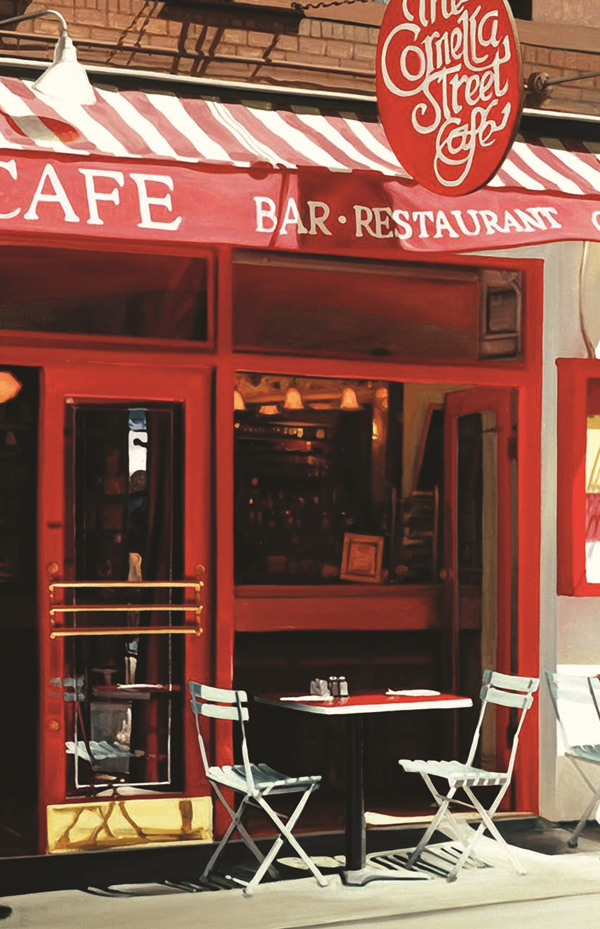
Painting by Stephen Magsig
The Deadly Zone Rouge of France – Monday Map
Some 100 square kilometers of France are closed to people and known as Zone Rouge – the Red Zone.
The land there is poisoned by the human folly that was World War I. A century later it remains perilous to tread upon.
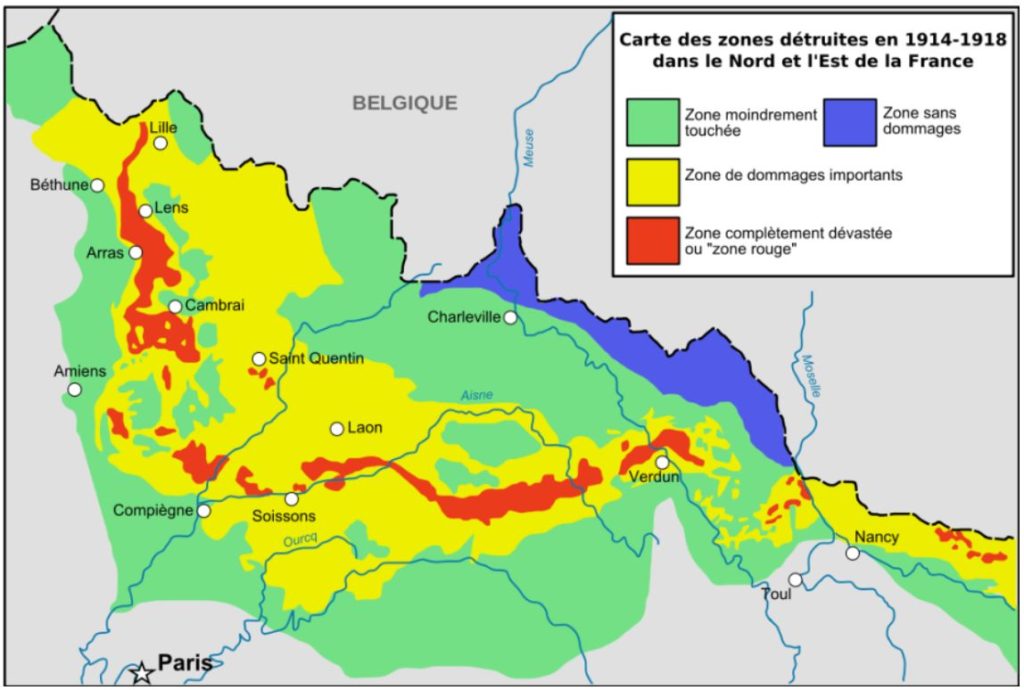
Most people are unaware this caged landscape exists among the otherwise beautiful French countryside, near the border with Belgium, as it is surrounded by countryside that has been slowly and imperfectly reclaimed.
There the Red Baron fought and fell, along with countless others of less-lofty reputations.
There the Red Baron fought and fell, along with countless others of less-lofty reputations. And there also are found the city of Verdun and the River Somme – names synonymous with human suffering on an obscene scale, because of the atrocious loss of life that took place there.
As revealed in eye-opening detail at a Messy Nessey, a blog dedicated to all sort of curiosities, Zone Rouge is downright macabre and other-wordily, yet cautiously explored by nearby residents who continue to harvest a ghastly collection of munitions and human remains.
“… the forsaken territory, originally covering more than 1,200 square kilometres (460 sq miles) in the years following the Great War. Today, around 100km2 (roughly the size of Paris), is still strictly prohibited by law from public entry and agricultural use because of an impossible amount of human remains and unexploded chemical munitions yet to be recovered from the battlefields of both world wars…”
The essay is supplemented with many photos from one Olivier Saint Hilaire, which are indeed evocative. With more found via the link to his personal website.
This representational map of the Somme campaign makes up the Red Zone area between the towns of Cambrai, Arras, and Amiens.
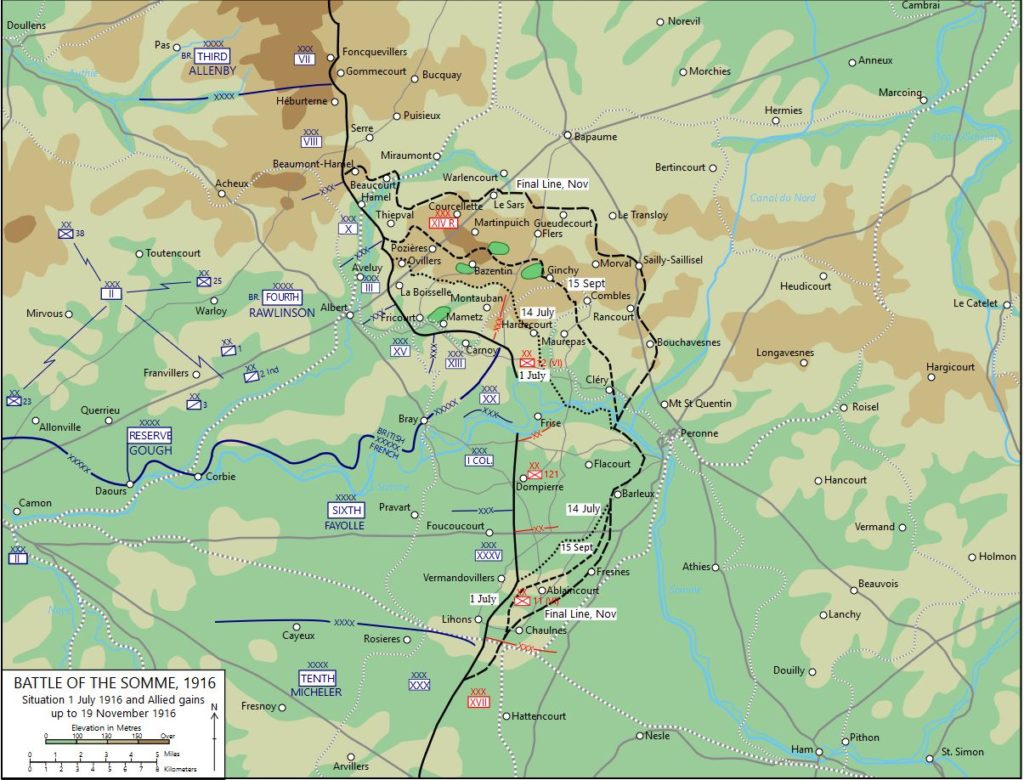
The Lost Generation
One hundred years ago, one of the most cataclysmic battles in human history was raging in northern France.
The Battle of the Somme began on July 1, 1916. Fifty-three years earlier, on July 1, 1863, the battle of Gettysburg commenced in Pennsylvania.
Over three days of fighting at Gettysburg, a total of 51,112 Americans on both sides were lost as casualties during the entire battle, with some 7,000 killed outright. It remains the bloodiest, most lethal three days in American history.
During the first day’s fighting at the River Somme, the British Army alone lost over 57,000 men, with 20,000 dying on the field.
Fifty-seven THOUSAND.
The battle lasted four months. The combined losses of the Franco-British and Imperial German armies were over 1.5 million men.
One and a half MILLION men.
On Thursday last, millions watched the semifinal football match of the European championships, between France and Germany. These young men, almost all of them in their 20s and among the finest physical specimens their nations could produce, were giving everything they could to prove victorious for the expectant countries and their own personal glory. And throughout the relatively civil competition, I was haunted by the fact that these same champion athletes would almost certainly have been wearing the uniform of opposing armies locked in deadly strife, had they been born 100 years earlier.
They would have undergone a very different kind of training and physical conditioning to hone their elite skills for the purpose of killing their fellow Europeans, in a war between states whose rulers were, in some cases, cousins.
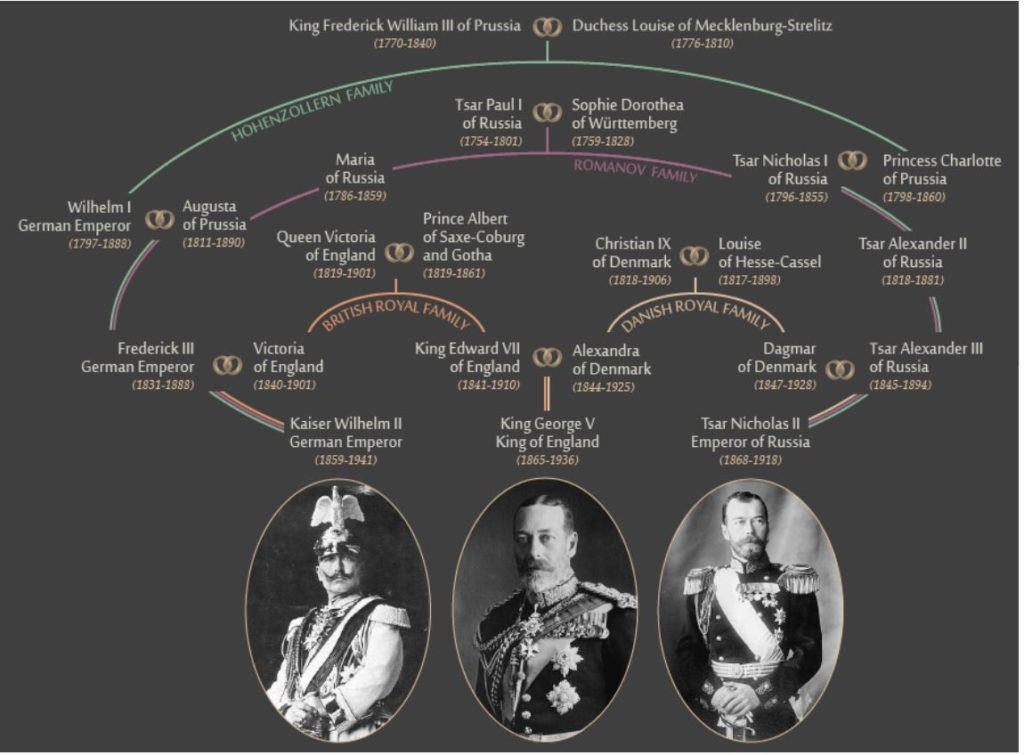
The tragic absurdity of the so-called Great War isn’t found in the fact closely-related cousins could inflict such horrors upon their own closely-related European peoples. But rather, that the people of Europe could have done it all over again less than 30 years later – with far greater loss of treasure and human lives.
As the United Kingdom prepares to leave the European Union, it is important to remember that the peace that has existed there is not to be taken for granted. Rather, it has required an enormous change of attitudes in nationalism, jingoism, and xenophobia, and continual efforts since the end the Second World War to prevent backsliding.
May the centennial of the Somme and other atrocious acts of war in the coming months and years help to educate and to supplicate the current tensions rippling across Europe and its neighbors.
The Most Significant 4th of July – Monday Map
The 4th of July is set aside to commemorate the signing of the Declaration of Independence, which actually took place on July 2, 1776.
But the most important July 4th of all was that of 1863, when it was celebrated as a national day thanksgiving and of mourning, at least throughout the northern states.
On that date, the city of Vicksburg, Mississippi surrendered to the combined forces under the command of General Ulysses S. Grant, at the end of a long, grueling siege during the War of the Rebellion, now typically referred to as the America Civil War.
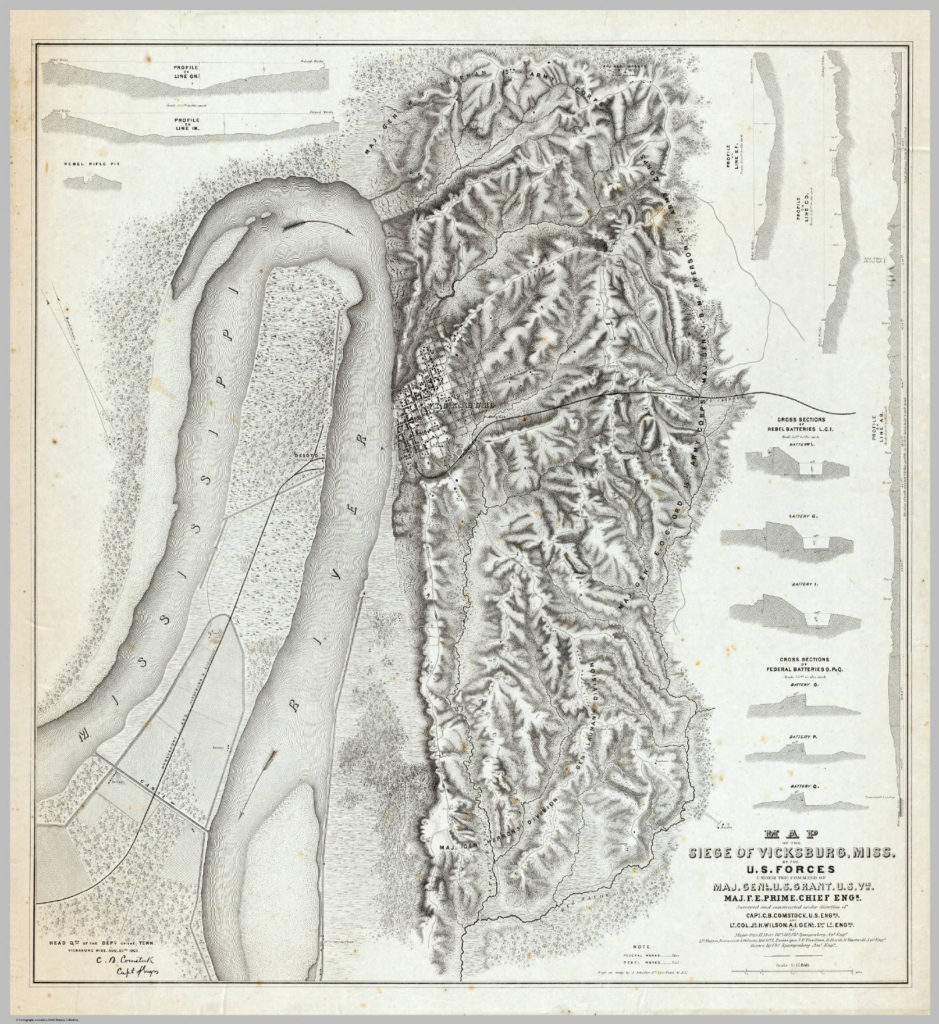

And on that same 4th of the July the rebel forces of General Robert E. Lee withdrew in defeat from the fields of Gettysburg, Pennsylvania, from where they retreated south across the Mason Dixon Line, and never again posed any serious threat to the nation’s capital, nor to any northern state.
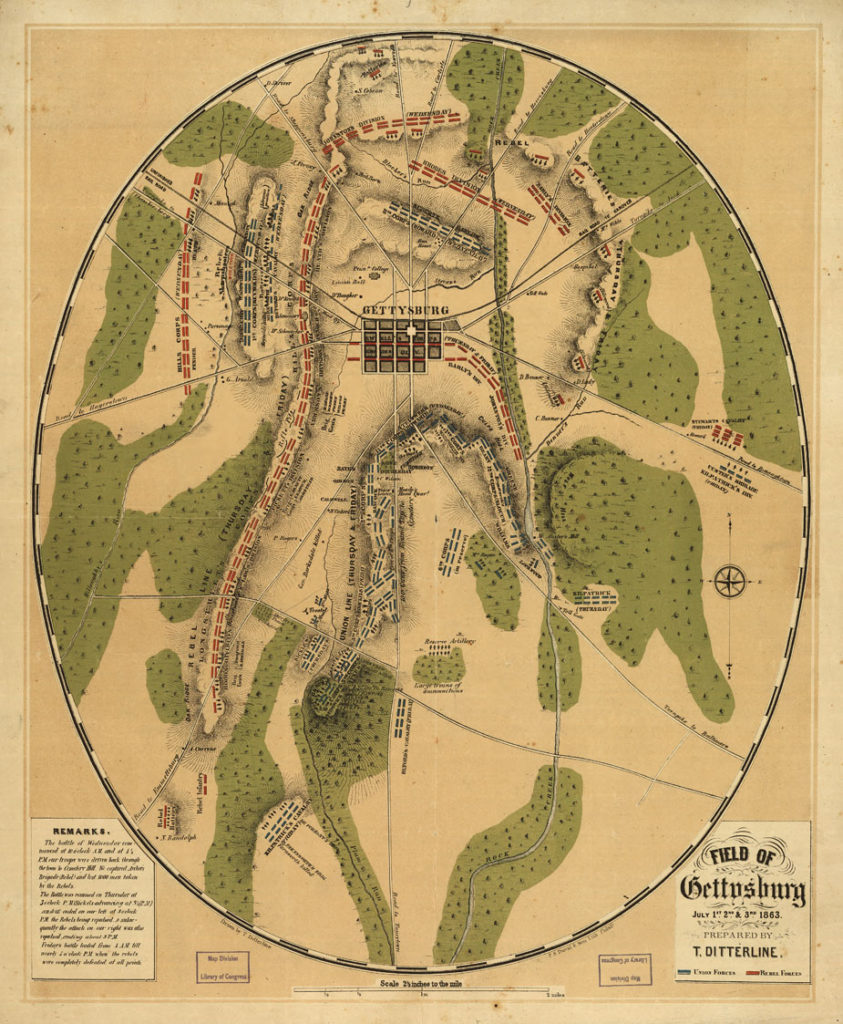
While the timing in Pennsylvania was accidental, at Vicksburg it was anything but.
The commander of the Confederate forces within the beleaguered city was born and raised a Northerner. He chose to surrender on the 4th of July, saying he knew his northern people and that they would give better terms on that day than on any other day of the year.
The very first 4th of July may have rang the knell for the birth of our nation. But it was this later, more important 4th of July which helped forge in the crucible of the Civil War a single nation from a more imperfect collection of discordant states.
And even if some continue to kick and scream from what Mr. Lincoln called a new birth of freedom.
